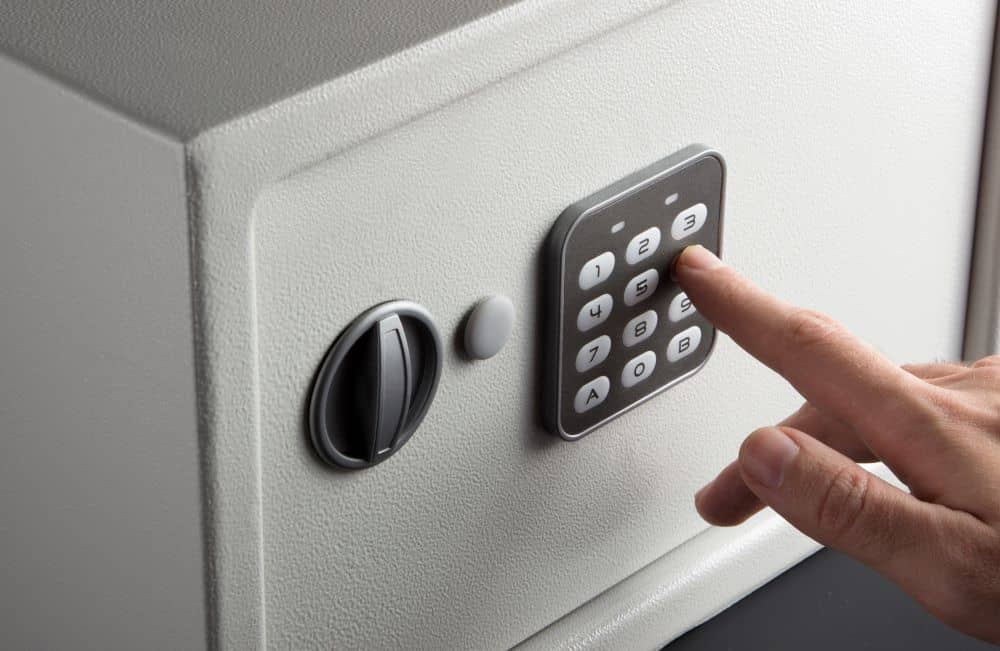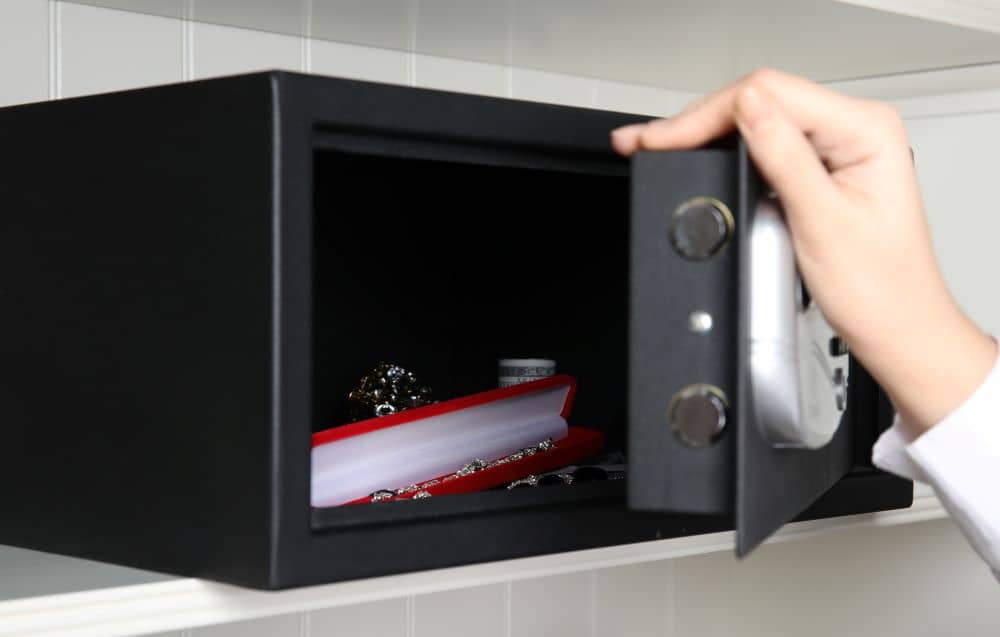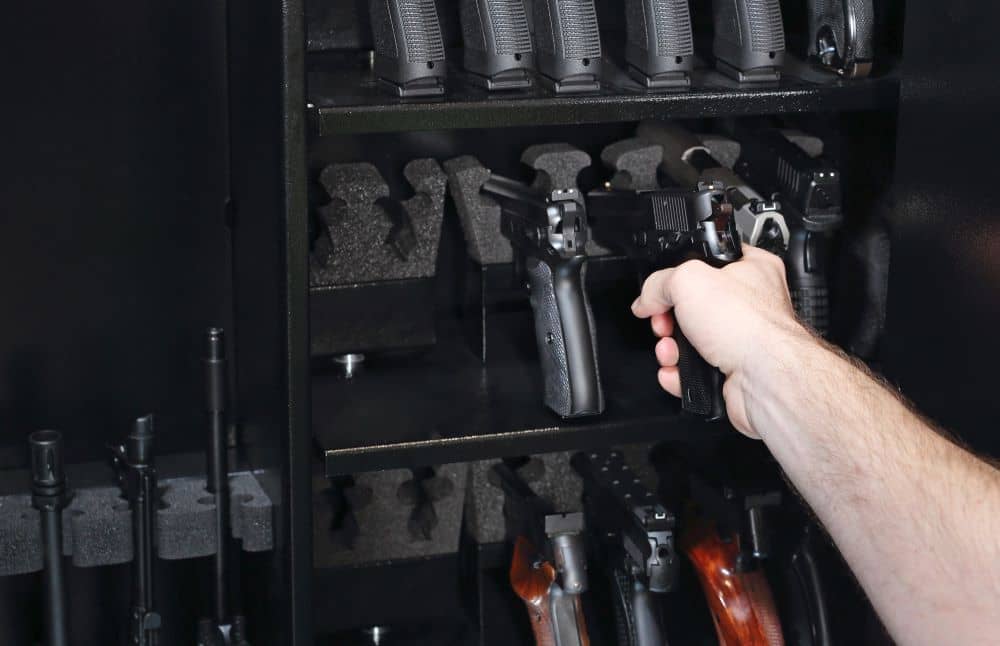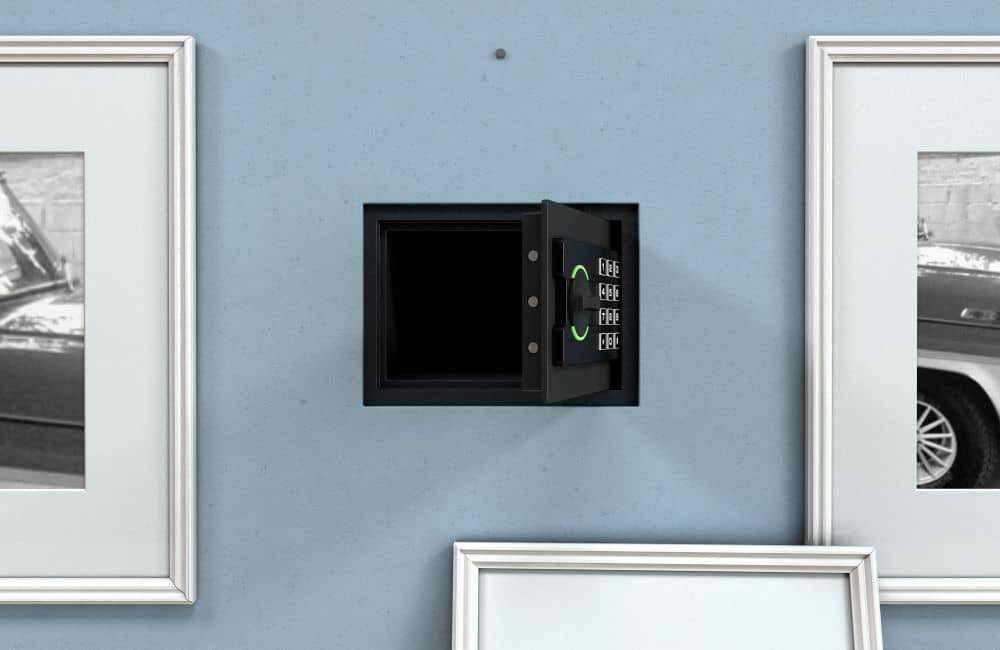
- April 14, 2021
- |Home Security Tips
- | 0
- 5,489
We have seen these interesting safes in movies, tucked behind a family portrait with life-changing papers and money. But do these kinds of safes exist? Yes, they do. The whole premise of wall safes is for them to be concealed and installed within a wall. The safe can be behind items, such as furniture, sculpture, mirror, and pictures. The objective is to make sure that the home safe does not attract any attention.
What Makes a Good Safe?
People have relied on safes for centuries now. It’s even believed that the very first safe belonged to Egyptian Pharaoh Ramesses 11 during the 13th century. Of course, the safes we have today are much more complex than during his time. That’s why it can get a bit confusing to figure out the best safe that meets your requirements.
But some of the must-have features include:
- Adequate Size: To know how big (or small) the safe should be, consider where you will install it. Also, think about what you plan to store in the safe. Do you plan to move the safe in the future? If that’s the case, you may want to opt for a smaller and lighter safe.
- Suitable Capacity: The capacity of the safe always depends on what you would like to store. For example, you do not want to buy and install a safe that can hold large or bulky firearms if you simply use the safe for jewellery or documents. It’s not “the bigger, the better” with safes. On the contrary, you should aim to avoid wasting space as much as you can.
- Fire Protection: This feature is integral. Before buying a safe, ask about its heat test rating. Some safes are rated with protection for 30 to 90 minutes (or more) of fire exposure of up to 648 degrees Celsius (1,200 degrees Fahrenheit) or higher.
- More Features: You don’t need a lot of features, but safes today come in a variety of options. Know your choices before settling. Does the safe come with a dial or an electronic lock? Does it have a bolting lock, or is it a re-locker? Will you need a safe with a reinforced steel layer for additional protection? Also, take a look at how the frame and door are constructed. Determine all the answers first before you purchase.
You may also want to know about the rating of the safe. In Australia, safes are usually rated based on cash and fire. The cash rating of a safe relates to the total amount of money you can store in it securely. That means the higher the cash rating, the better the security that particular safe offers.
A safe with a high cash rating typically has superior security features. For instance, it can have a much thicker door or body. There may also be more locking bolts, and the locks used are expensive and of good quality.
The contents of the safe can be insured, but insurers will have their restrictions. One of the most important rules you need to follow is to make sure that the safe is installed by a professional. If you installed it yourself, it might not be according to the manufacturer’s instructions. There is a risk that the insurance company will not cover the safe.
Insurers also require that the safe is always locked properly. Your safe may be rated from $5,000 to $500,000. You will know the rating if you ask about the safe’s product details.
Aside from cash, fire rating is also essential, which indicates the safe can be exposed to fire for a certain amount of time. The contents remain safe for that duration. Your safe can be rated zero, which means there is no fire protection. It may also be rated 30 minutes, two hours, or even four hours. A fire-resistant safe typically has high-strength fire chambers from the door to its interiors. It may also be built with steel plates and industrial-grade firewalls.
Different Types of Safes
Apart from the features mentioned above, you should also select the type of safe based on your requirements.
Four main types exist, which are:
Fireproof Safes
Properties can burn at temperatures above 590 degrees Celsius. Local fire departments do not let these fires burn for a long time. So, when you have a fire-resistant safe, the items inside it are not affected by the high temperature outside. However, fireproof does not mean forever. If your home safe is rated fireproof at 500 degrees Celsius for 60 minutes, that fire protection will begin to deteriorate after that time.
Jewellery safes typically have the highest fire rating with the longest protection, usually made of fireproof steel. You may want to pick this type of safe if you’re going to store something with sentimental or high monetary value.
Burglar-Proof Safes
As the name suggests, this type of safe aims to ensure that your belongings are protected from thieves. Many people who live in neighbourhoods with high crime rates install burglar-proof safes. The safe can come in different levels of complexity. It may either be a floor or wall safe, which means that the burglars cannot pick the safe up or carry it away in case of a break-in.
But it does not mean that only safes bolted into the floor or wall are burglar-proof. Safes are commonly made of solid steel, so they are incredibly heavy and cumbersome to steal. Also, they are difficult to crack and may have a combination of unlocking requirements, such as passcodes, keys, and fingerprints.
Gun Safes
Gun owners should keep their weapons away from sight when not in use. The locking mechanism for gun safes ranges from lock dials to keypads. Just like burglar-proof safes, the newer versions of gun safes also utilise biometrics. All firearms should be concealed. In Western Australia and other parts of the country, leaving a gun in a car unattended is an offence. Storage requirements for weapons are provided in great detail in this downloadable brochure. The document states that the cabinet or storage should be made of mild steel with two-millimetre thickness.
Waterproof Safes
Fire is not the only enemy. Water is also dangerous and can wreak havoc on your home at any time. If you have valuable documents, gadgets, and other treasured items, you want to keep them away from harm. By storing them in a waterproof safe, you do not have to worry about damaging the possessions you want to protect.
Misconceptions about Safes
First and foremost, safes are not created equal – just like any other product out there. Safes come in a variety of styles, sizes, and prices. Some are merely cabinets and do not even have a burglary or fire protection. Before you buy, it’s essential to look at how the safe is constructed, particularly the metal thickness and locking mechanism. Then, look at the fire rating.
Some considerations you make will largely depend on what you will store. If you want a gun safe, for instance, you will usually find heavier and thicker options. The body typically has a 12 gauge steel, and some may even have 10 gauge steel. The lower the number, the thicker the material.
Fire rating is important, but going for a fireproof safe rated at less than an hour may not survive in case of a house fire. It’s even more crucial to look for a fire-rated safe when it is for commercial use. If your budget does not permit you to buy a highly-rated fireproof safe, opt for the longest fire protection you can find.
But here’s something you should remember. Fireproof is not burglar-proof. Most people think that having a safe means that thieves cannot get to their safe. It is untrue. Some criminals are highly skilled, so they know how to crack open a safe. A fireproof safe that is not burglar-proof may protect your valuables from fire but not from thieves.
How so?
Here’s the answer. Fire-resistant safes do safeguard your papers and other items from smoke and heat damage. However, they typically use thin metal – around 16 to 18 gauge. As mentioned above, when the number is high, steel or construction becomes thin. That means that burglars will find the safe easy to attack. Metal is the primary way to protect your possession against fire. However, it can easily be punctured. And thieves with a saw or any cutting tool can get through the safe.
If you have a fireproof safe, you may not want to store high-value items in it, such as jewellery, precious metals, and high amounts of cash.
Now, what if you have a burglar and fireproof safe?
You may think that a composite safe that can keep fire out and thieves away is the best option in today’s world. Unfortunately, it isn’t enough, particularly if you have important documents and high-value items in one safe.
While a composite safe is a great solution, you should also think about the maximum value you will store in that safe. And that does not just pertain to the possessions you will keep now. We’re talking about other things you believe will need safekeeping for the next ten years or so.
Your belongings will continue to grow in value over time. There’s a chance that the safe you have purchased originally will not be enough to protect those possessions. Burglar ratings are generally based on the manufacturer’s standards, as well as the insurer’s requirements. So, it makes sense to talk to your insurance broker and ask for recommendations regarding content value storage.
For advice and professional safe installation, contact Diamond Lock & Security today.



